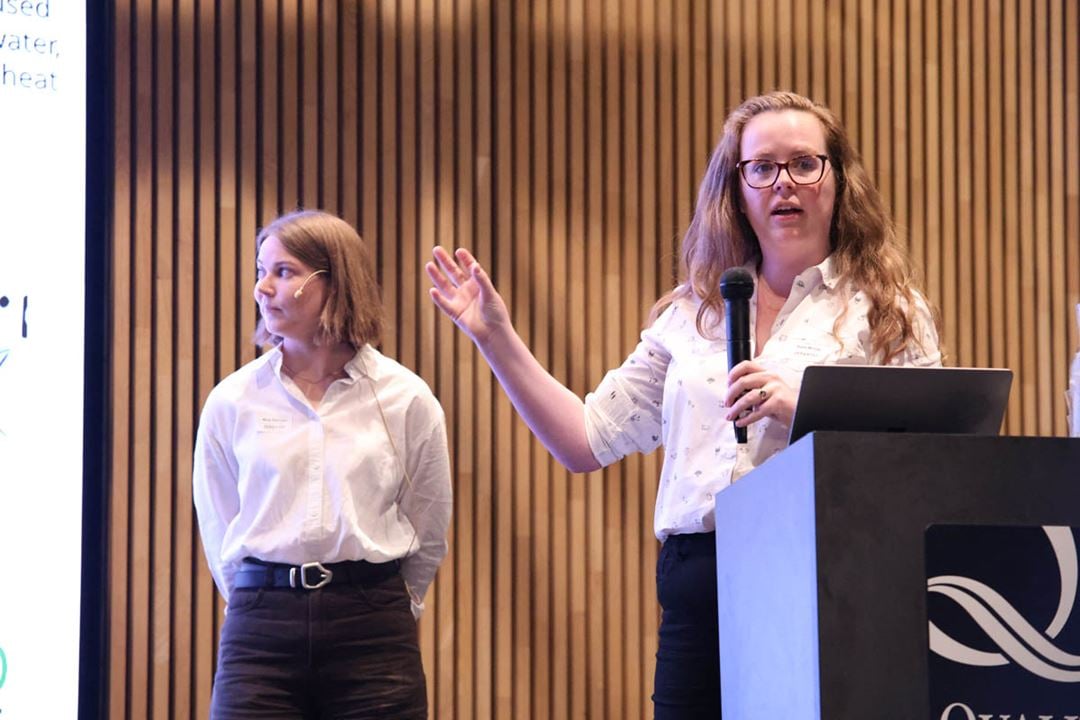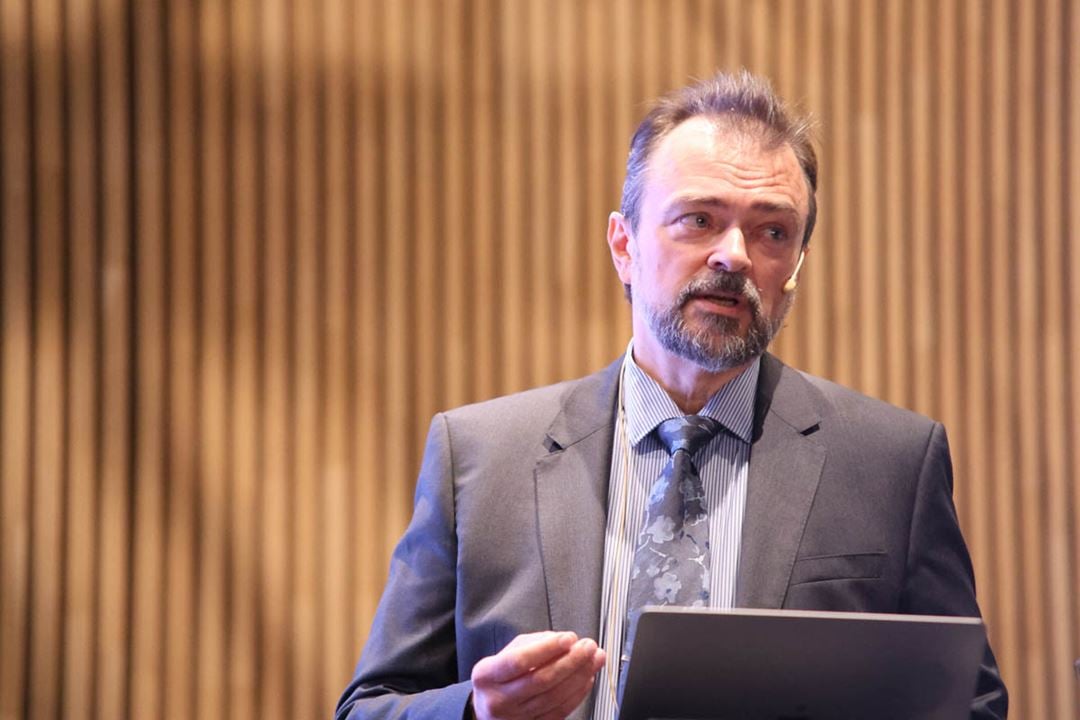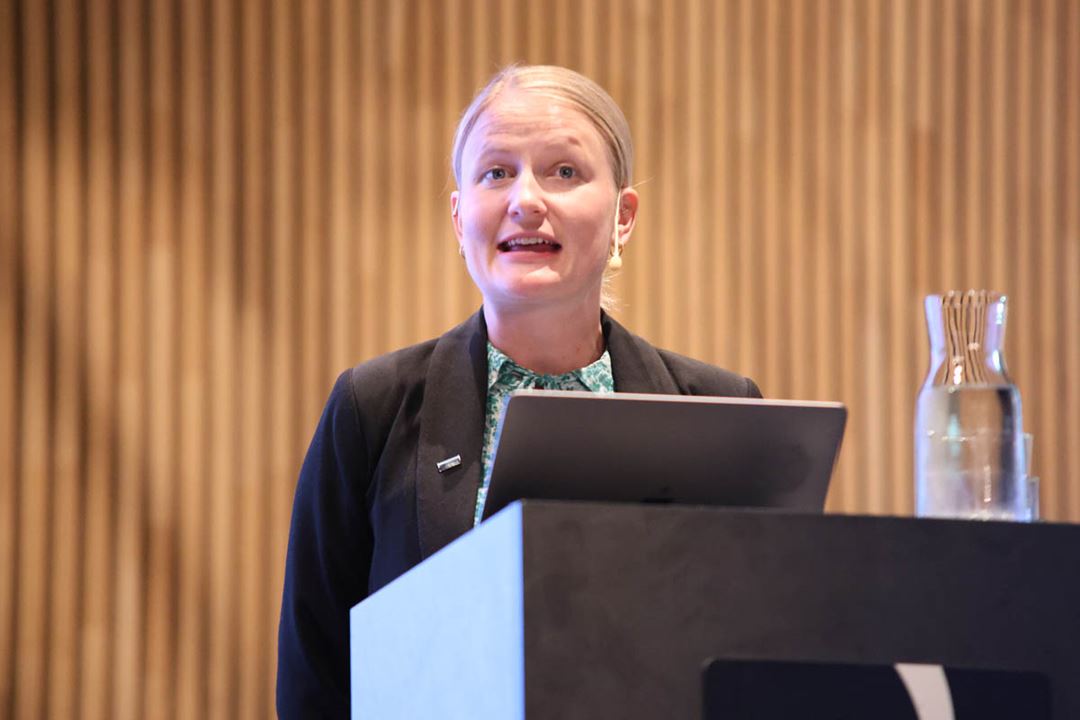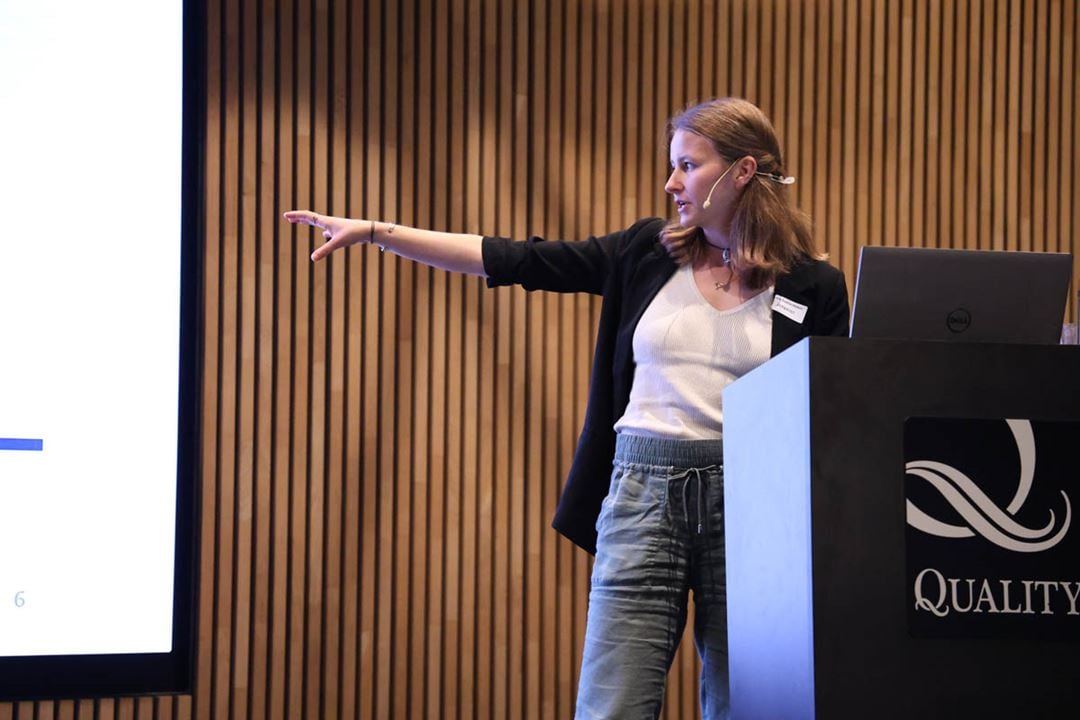The event was organised by the Green Platform project ZeroKyst and featured several presentations from the research component (KSP), which is led by SINTEF Energy Research. The theme was whether the fisheries and aquaculture industry is drifting into a backwater – or if the green transition is in fact accelerating.
Research on charging connectors and fuel cells
Nina Thomsen from SINTEF Energy presented the project’s laboratory tests of charging connectors for maritime environments. Connectors exposed to salt spray showed higher resistance than those that were not, but “the increase was not sufficient to cause serious faults in actual operation,” Thomsen explained. The results provide valuable insight into how shore power and charging systems can be adapted to harsh coastal climates.

From SINTEF Industry, Katie McKay demonstrated how different operating profiles affect fuel cell lifetimes. “Long-duration, steady operation gives the best lifetime, while more dynamic profiles can reduce it by a factor of four,” she said. Still, the results indicate that PEM fuel cells hold strong potential for the maritime sector, with an expected lifetime of up to 60,000 hours.
Power demand in ports
How can coastal communities meet a growing power demand? Andrei Morch from SINTEF Energy described how the research part of ZeroKyst has mapped energy use in twelve ports in Lofoten. Case studies from Napp and Værøy reveal large variations and highlight the need for both hydrogen and grid adaptation to secure supply.

What will it take to speed up the transition?
From the Green Shipping Programme, Eirill Mehammer underlined that a positive business case and acceptable risk are crucial for shipowners. She presented concrete proposals to close the cost gap between green and fossil fuels, including a CO₂ fund, subsidised construction loans, and contracts for difference. Mehammer previously worked as a research scientist at SINTEF Energy and played a key role in preparing the ZeroKyst application.

Karoline 2 – new technology on the water
A highlight of the seminar was the presentation of Karoline 2, a fishing vessel built by Selfa Arctic and launched the day before. The vessel is the world’s first electric snurrevad (seine) fishing boat and has been designed to use hydrogen once regulations and infrastructure are in place. “The boat is completed and prepared for hydrogen, but the approval processes have been far more demanding than expected,” said project manager Erik Ianssen.
Karoline 2 is 12.99 metres long, equipped with a 200 kW electric motor, a 400 kWh battery, and a diesel generator for backup. The vessel will serve as a technology demonstrator and learning platform for the entire industry.



